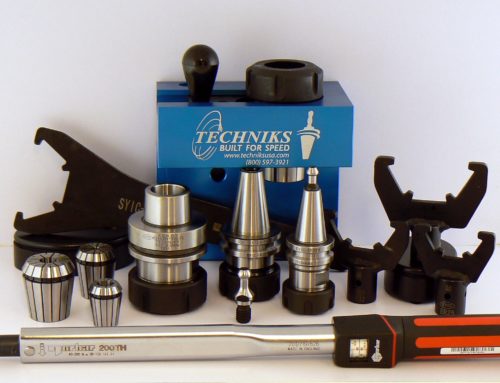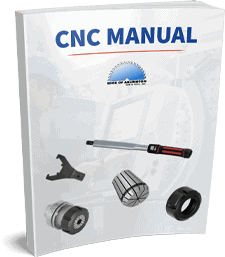Many factors need to be considered when evaluating any cutting situation, before selecting a tool. You can find more useful information in our FREE CNC Manual available for download on our site!
- What is the desired finish? Chip-free, hidden part, some minor chips ok, etc. Are both sides (top, bottom) of material of equal importance? The desired finish will often dictate not only what type of tool we can use but also how fast we can cut and whether we must make multiple passes.
- Which is more important, speed or finish? While striving for both, sometimes we must assign priorities or make compromises. Higher quality finish can mean higher machining costs (multiple passes, use of more expensive tooling, slower feed rates, etc.). However, ironically, most people run their tools at too slow a feed rate at too high of a RPM, resulting in heat buildup and premature tool wear.
- What are the machines capabilities and limitations? It is important to know your CNC’s capabilities and limitations. If your machine’s top feed speed is 600 IPM as opposed to a machine capable of feed speeds of 1200 IPM, your tool selection and setup will be quite different. It is important to note here that just because your machine is capable of running at 3400 IPM does not mean you can cut at that rate. When programming any cut for the first time, it is important to ascertain at what feed that part is to be cut. Part size or geometry alone may preclude you from running more than a few hundred IPM.
- Do you have sufficient ability to hold the material you are cutting? If you can’t hold it, you can’t cut it. This is one of the most common problems that I encounter. I am continually amazed how many people will accept minimal feed rates and quality because of chatter and movement. Your ability to make a clean fast cut is related to your ability to hold the material firmly without vibration. Insufficient hold-down can be responsible for everything from premature tool wear and breakage to sub-standard parts, chatter marks, chipping, and material movement. A little planning and effort will give you huge payoffs in productivity and cost savings. When purchasing a CNC router, don’t skimp on the vacuum system. I have never met anyone who said they had too much.
- What is the material you are cutting? Raw particle board, plywood, MDF, single-sided laminate, double-sided laminate, etc. Different materials have different cutting properties and may restrict your tool selection and will often dictate geometries, feed, speed, etc.
- Are there any operations after this one that will cover, conceal, or change the shape of the part being cut? For example, the top edge will be rounded over or the edge will be covered in such a manner so that a small chip would be of no importance.
- Is exact size important? Does another part rely on the accuracy of this part? Maintaining exacting measurements may require multiple passes after a tool is serviced or if the size is non-standard. Edge of Arlington offers insert and diamond tooling designed to solve these types of problems.
- Part configuration and size are important considerations. Small parts can be hard to hold. Intricate parts, parts with holes, curves, and short cuts can be challenging due to heat generated because of a machinery’s inability to make instantaneous speed and directional changes. Advances in machine capabilities have greatly improved the speeds associated with travel time and the ability to change direction. However, a bit turning at 18,000 RPM still turns at 300 inches per second and a good Boy Scout can start a campfire with a stick at a much lower RPM.
For more, refer to our CNC Manual.
To peruse our online catalog or to place an order, visit EOASAW.com or call us at 817-461-7171.
Have any questions? Feel free to ask us in the comment section, give us a call, send us an email, or visit us on Facebook!
For more informative EOASAW blog posts, visit our main Blog Page.


